#Song Machine solos with the story and art..
Explore tagged Tumblr posts
Text

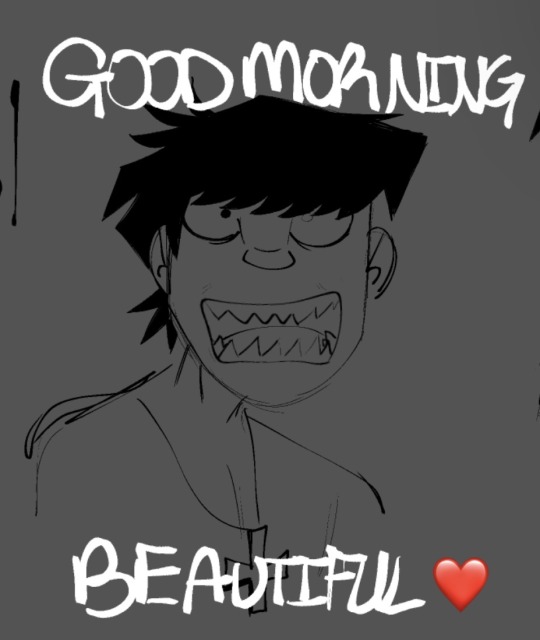
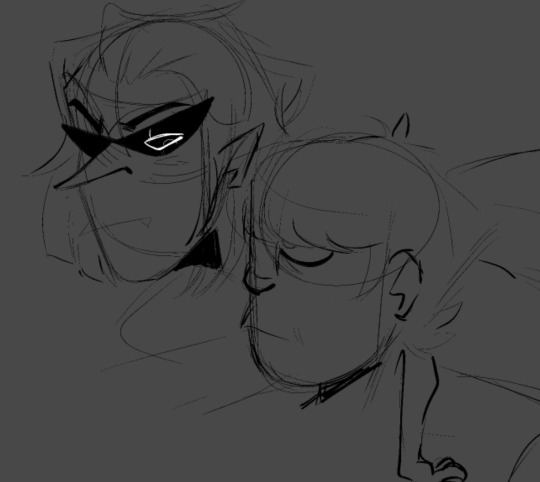


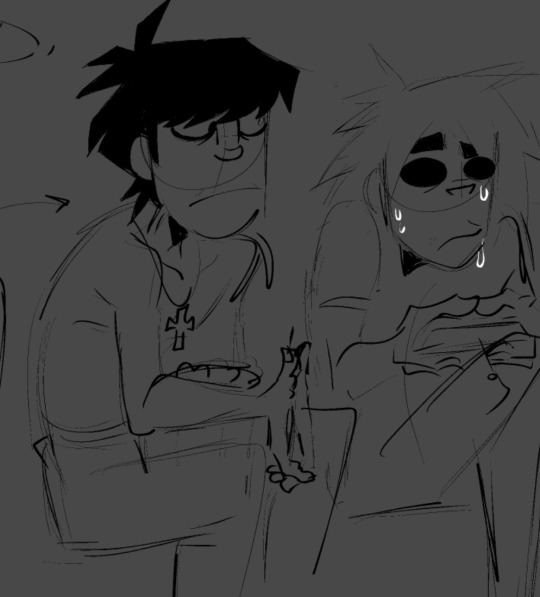
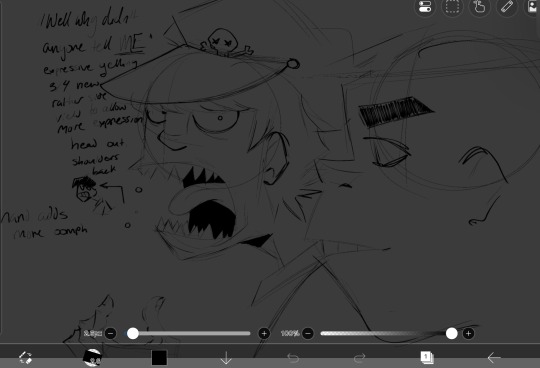
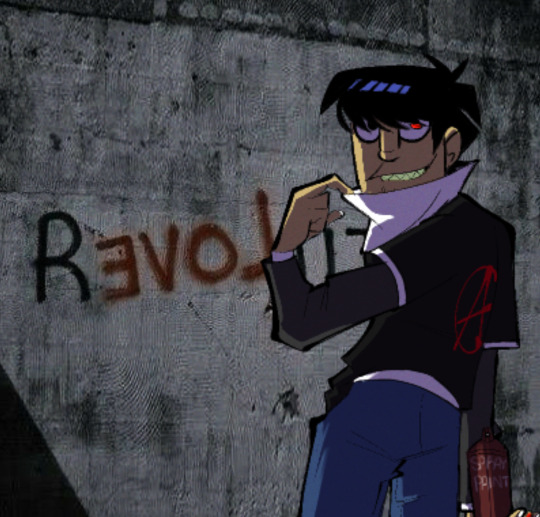

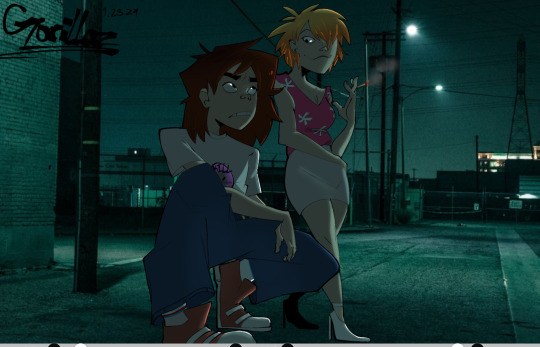
LET ME FREE FROM DRAWING GORILLAZ ART PLEASE PLEA
The last one is my best friend and noodle 🗣️💕
#I am the. one and only Phase One art fan#It has the yummiest style and captures the 2000’s feel of cartoon#MWAH#I’m also a massive fan of phase six art#Song Machine solos with the story and art..#and don’t talk about Plastic beach ..#Shakes#Gorillaz#art#My art#I don’t feel like tagging these I just wanna pop off per usual#bri rambles
54 notes
·
View notes
Text
btw, I met a SecUnit
The soon-to-be-released new TMBD story "Rapport: Friendship, Solidarity, Communion, Empathy" covers ART revealing to its crew that it met a rogue SecUnit! This formerly-missing scene has been the subject of a lot of fan speculation, including many fanfics. Now's your chance to enjoy them before they're de-canonized! (And keep enjoying them afterwards, because even Martha Wells' version is just one more cake for us to enjoy!)
Below is a collection of every fic I could find that features the "btw, I met a SecUnit" conversation between ART and its crew. Works tagged with a / relationship tag are placed below the cut.
I very well may have missed some—if you know any more, please add them! And be sure to show the authors some love in the comments :)
Not Angry, Just Disappointed by mensah
Seth said sternly, “Perihelion, you need to tell us the truth. We can’t leave the home system until we find out what happened. If you’re hiding something—” Peri cut him off. I am not hiding anything. Peri might be able to lie astonishingly well to a corporate representative, even impersonate a human over the feed, but it couldn’t lie to Iris. “Yes, you are,” she said. -- Or, the story of how exactly ART told its crew about Murderbot.
Private Diary of Iris after Artificial Condition by ImitationGame
Perihelion returns from its solo mission. Dr. Delawyn, an expert in machine cognition, notices that there has been unusual activities in its emotion processing system. Perihelion admits having allowed a rogue SecUnit onboard.
Not applicable by Wrenz
Iris is finally back on board Perihelion after its latest cargo-run (with side-order of espionage) and they have a chance to catch up. She wasn't expecting her sibling to have become attached to someone new while it was away. Let alone a rogue SecUnit.
Partial Disclosure by Gamebird
The complicated family dynamics when you're a super-secret intelligent spaceship trying to explain the illegal things you did to help your new friend (the rogue security construct) to your augmented sister so she'll team up with you against your dad who is also your captain and commanding officer. Actually, best not to explain the illegal things. Maybe just the 'new friend' part for now and hope for the best on the rest of it.
The Talk by Gamebird
From the tags of fingolfinwiththesteelchair on Tumblr, “can you imagine ART having to explain to Iris and Seth WHY it let SecUnit on??” (https://www.tumblr.com/fingolfinwiththesteelchair/735884180224950272/this-has-been-perihelions-guide-to-making?source=share) This is set very shortly after [redacted] in System Collapse and before the trip to the surface that serves as the opening scene for that book. (No System Collapse spoilers to worry about, though.) (Minor edits since initial publication to bring it in line with canon.)
unexpected object in ventilation system by CompletelyDifferent
When people are overwhelmed with feelings they won't (or can't) admit, it causes them to vomit out flowers. Love is a particularly common culrpit. And yes, it's been an enduring symbol of enduring love for humanity since time immemorial, yadda yadda, truth is, in reality, it's kind of a pain to deal with. Kaede's picked roses and daises from her teeth more times than she'd care to admit, and helped friends hack out lilies even more. She knows the drill. Someone on board The Perihelion has a bad case of The Petals, and she's determined to track down who.
Below: Fics on this list that include a / relationship tag. (This is a somewhat arbitrary separation—I suggest reading the author's tags and notes for more nuance.)
Gos-ship by urisaarang
Peri tells its crew it met someone. Someone special. Someone worth committing a little crime for.
Fallen the hardest by OctoberSeventeenth
When Perihelion keeps playing the same song Iris suspects that there might be more to this... Basically How I imagine Peri told its crew about SecUnit.
Parallel Signaling by Joyfulldreams
After leaving RaviHyral, by the time I exit the wormhole adjacent to Port Outlander, the sting of SecUnit’s absence has finally begun to fade. Cargo runs are always lonely, so this is nothing new. SecUnit left me with more to occupy my time than I usually have. Media. Memories. A few topics of pointless rumination, I suppose, but also new topics of data analysis and research. OR The time period between the end of Artificial Condition and the end of Exit Strategy, from ART's POV.
#murderbot diaries#the murderbot diaries#tmbd#murderbot#murderbot fic#tmbd fic#fic rec list#stars has thoughts#i have not read every fic on this list in full but i have confirmed that all of them contain The Scene#(the title of this rec list is how i described the scene on discord when we found out that it was being covered in rapport lol)#(couldn't think of anything better XD )#so wild to have something so popular in fanon get canon-ified!#it's a weird thing but let's have fun with it by appreciating the authors who got there first!!!
169 notes
·
View notes
Text
HALESTORM's LZZY HALE And JOE HOTTINGER Announce 'The Living Room Sessions' 2025 Tour
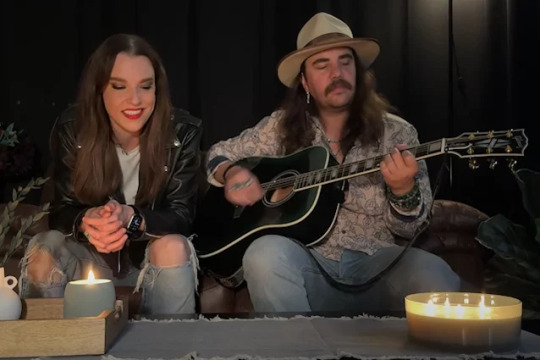
Lzzy Hale and Joe Hottinger of Grammy-winning hard rock band HALESTORM have announced an intimate tour featuring the two of them performing acoustic, stripped down versions of HALESTORM favorites and the music that has inspired the band. Dubbed "Halestorm's Lzzy And Joe: The Living Room Sessions", the tour consists of 12 dates in January 2025. A full list of dates is below.
A special BLABBERMOUTH.NET presale will begin on Thursday, October 24 at 10:00 a.m. local time and end on Thursday, October 24 at 10:00 p.m. local time. When prompted, type in the presale code "2025FREAKS" to access tickets before the general public. Check back here on Thursday for ticketing links to individual shows. General on-sale will be Friday, October 25 at 10 a.m. local time.
To give fans a taste of what’s to come at the shows, today Lzzy and Joe posted a sneak preview of a performance of "The Silence".
Lzzy states: "With this tour, we're inviting our fans to experience what it would be like hanging with Joe and me in our living room: picking up instruments, telling stories, chatting about songs that helped shaped us as a band and brought us to where we are today."
Joe adds: "Back when we decided to quit our day jobs and make music our full-time endeavor, Lzzy and I would play music wherever we could, and sometimes that meant playing acoustic covers in any bar or restaurant that would have us. That time really allowed us to develop our playing skills and dig into songwriting, and it really set the groundwork for what HALESTORM is today."
"Halestorm's Lzzy And Joe: The Living Room Sessions" 2025 tour dates:
Jan. 08 - Flint, MI - The Machine Shop Jan. 10 - Bloomington, IL - Bloomington Center for the Performing Arts Jan. 11 - Des Moines, IA - Hoyt Sherman Theatre Jan. 13 - Springfield, MO - Gillioz Theatre Jan. 14 - Little Rock, AR - The Hall Jan. 16 - Chattanooga, TN - The Signal Jan. 17 - Biloxi, MS - Hard Rock Live Jan. 19 - Pensacola, FL - Vinyl Music Hall Jan. 21 - Savannah, GA - District Live at Plant Riverside District Jan. 22 - Charleston, SC - Charleston Music Hall Jan. 24 - Springfield, MA - Aria Ballroom/MGM Springfield Jan. 25 - South Burlington, VT - Higher Ground
In a September 2024 interview with PK of Louisville, Kentucky's ALT 105.1 radio station, Lzzy spoke about the progress of the recording sessions for HALESTORM's follow-up to 2022's "Back From The Dead" album. Lzzy said: "We've had three separate sessions in the studio with — we're making a record with [producer] Dave Cobb. And he's actually a huge closet metal fan, and so he's really excited. And so we're making this great music, but we're constantly touring. So we've had, like, three different sessions in the studio. We're probably — what? — 70, 80, maybe, percent there. We have a studio in our house and so I'm doing a lot of the finishing touches on vocals and sewing everything up, doing solos and all that. And then we get back in in December to just say, 'Okay, this is good.' And then, yeah. And then there we are. So we're excited about it. We really are."
Cobb has shared in nine Grammy wins, including four for "Best Americana Album" and three for "Best Country Album". He's also been named "Producer Of The Year" by the Country Music Awards, the Americana Music Association (twice) and the Music Row Awards, and has been a Grammy nominee in the category.
HALESTORM and I PREVAIL recently embarked on summer 2024 co-headlining tour. Produced by Live Nation, the trek kicked off on July 9 in Raleigh and ran through August 17 in Las Vegas. HOLLYWOOD UNDEAD and FIT FOR A KING served as support. The tour was also the catalyst and the creative spark for HALESTORM and I PREVAIL's collaborative track "Can U See Me In The Dark?", which was released in June.
"Back From The Dead" has tallied over 100 million streams worldwide. Rolling Stone called the title track "a biting but cathartic howler about overcoming all obstacles," and that song as well as "The Steeple" marked their fifth and sixth number ones at rock radio, respectively. Associated Press said the album "will definitely be in the running for best hard rock/metal album of the year." Their previous album, "Vicious", earned the band their second Grammy nomination, for "Best Hard Rock Performance" for the song "Uncomfortable", the band's fourth #1 at rock radio, and led Loudwire to name HALESTORM "Rock Artist Of The Decade" in 2019.
Fronted by Lzzy with Arejay, Hottinger and bass player Josh Smith, HALESTORM's music has earned multiple platinum and gold certifications from the RIAA, and the band has earned a reputation as a powerful live music force, headlining sold-out shows and topping festival bills around the world, and sharing the stage with icons including HEAVEN & HELL, Alice Cooper, Joan Jett and JUDAS PRIEST. Additionally, Lzzy was named the first female brand ambassador for Gibson and served as host of AXS TV's "A Year In Music".
youtube
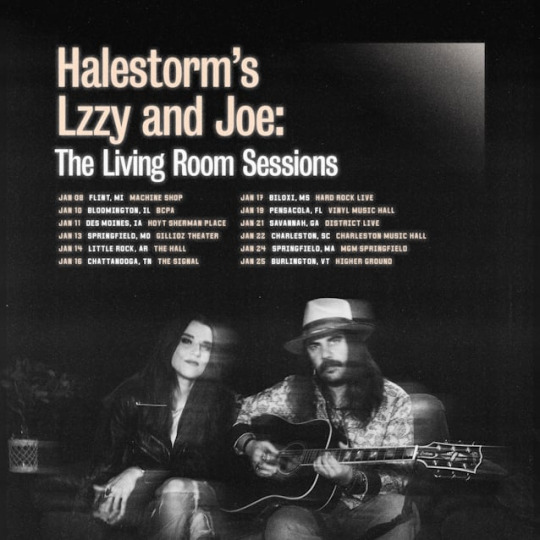
14 notes
·
View notes
Text
I’m feeling rlly bored so
A post abt what inspired me to make Limler and his history, since he was the first onceler I made ever.
The inspiration!!
1. Creature Feature/Rufus Rex

Creature Feature was a band started by both Curtis RX and Erik X in the 2000s. It’s more “niche” nowadays but back then they had merch in hot topic and everything. Rufus Rex is a solo project from Curtis RX and I wanted to base Lim off of his work, so he’s more Rufus Rex than he is Creature Feature.
2. School For Little Vampires

Batler is more inspired than Lim is for this one, but I took HEAVY Inspiration from the art style. This show is originally german and, of course, based on a german book under the same name but Netflix picked it up and provided english episodes up until the last season. I thought the art style was cute and I had grown up with the show, so I wanted to use the art style for a nostalgic feel.
3. Rusty Cage
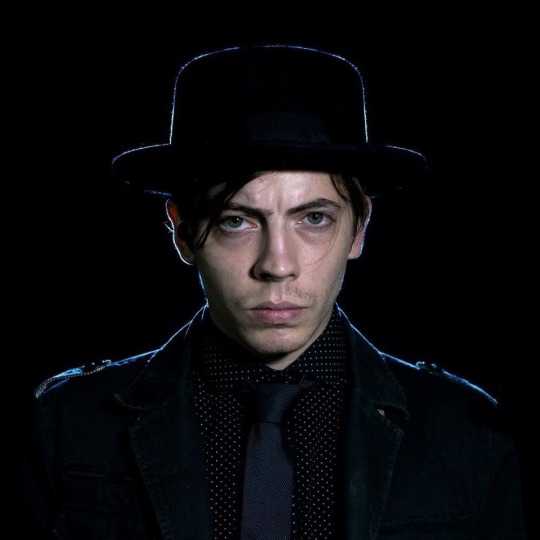
Once again, a music thing. You’d pronounce recognize him from his knife game songs, the noose songs, the cuss words song, or him building a giant guillotine and pretending to chop his head off on livestream, but i’ve been a fan of his work for quite some time now and felt I wanted to incorporate my love for his work into a character.
History section,,, aka me just rambling.
I think I had wanted to make a onceler myself for a few months before thinking of him, and he’s definitely gone through some phases. I’ll try not to spoil the story here,,,
Originally he was a showman running a freakshow and his name was cf-ler. This concept centered around The Greatest Show Unearthed, but I scrapped the idea. Then he was gonna be based off of Dr. Sawbones, a song and character also by CF and he would have a garden where he would use corpses as fertilizer. I wasn’t satisfied with that idea either obviously and tried to settle on him being trapped in what was kind of just the backrooms. I didn’t think of it like that until a friend pointed it out and I thought it was funny, that’s when i named him Lim.
Finally the most planned out (and still scrapped) concept. One of his engineers tampered with one of the machines in the factory, causing an incident where an employee had died. Because of the backlash and his inability to just let go of the past, he boarded himself up in his factory and refused to leave despite being tormented by the ghost of said employee. I liked the idea, but in the end I just didn’t like him as much as I could and now we’re at the current story!
11 notes
·
View notes
Text
Youth: first listen
First of all. It's the first time the parasocial relationship I have with Doyoung mutated into a parasocial friendship of sorts, heh. The feeling is of cheering for a friend's project's success. I guess it is for two reasons: 1) the reverse order of things (instead of "like a song (my choice, I'm the active party)->discover artist behind", it is "like an artist->listen to what he gives you (artist's choice, I'm a passive party)", 2) I have artist friends whose drawing style I'm not particularly a fan of (i.e. I wouldn't care for it if it was made by someone else, a noname to me), but I still follow and consume their art, because I care for people behind and I know the character/thoughts/POV of the artist, which changes my perceptions).
I've listened to the album only once by the time I'm writing this post. My first impession is that there are no weak songs (yokshi, perfectionist Doyoung), and that I'm glad it is more diverse in sound and voice modulations than Korean ballads and songs usually are. As I like richness in songs.
Me and some of the readers had been apprehensive of Doyoung catering to fans and going gp friendly road. Thankfully, Doyoung is a mastermind afterall. The album is both for the fans and the general public and for himself. Half/half.
The album seems to be divided in the following parts:
Prologue: Beginning and Little light.
The main character of a Disney animation movie sets on a journey. A proclamation of intent to sing for a long time, of a goal to reach as many "stars" (hearts/listeners). "Beginning" was penned by Do himself (and, honestly, really reminded me Mulan or Moana, heh). For "Little light" he befriended Lucy's composer (they are both 96-line, btw). Considering the timing, it seems to be one of the last songs to be added. A song Doyoung needed for his vision of the album. The song was gifted to him (the composer's words), written the way he commissioned it. In other words, it is his story and his feelings, he debuted with HIS song, even if written by someone else (but for him).
2. First chapter: A letter to fans.
"From little wave" has lyrics by Doyoung. It is a song for the fans, a message to them.
3. Second chapter: Friends. Dreams come true.
"Time machine" was written by Mark, he and Taeyeon featured. Do is a known SNSD fan, a fan of Taeyeon and her friend. Mark has been Do's favourite kid since pre-debut. When the news broke, fans immidiently remembered how Do gifted Mark notebooks for writing lyrics. Let's also remember how Do sent a food-truck to Mark's first solo MV, always hyped him on IG. I think Do supports Mark as a musician in particular. Mark is a rapper in NCT, however, he wants to sing with the guitar. And that what he did on the track. A step towards his own dream, him as a songwriter and singer.
Both collabs are very meaningful and have roots in the past.
The redheaded teenager who didn't know what to do really and his prodigy baby growing up and becoming world known artists.

Do already has songs with Haechan (Maniac, Coming home), plus Hyuk has started songwriting attempts much later than Mark. He is not ready yet. Taeyong is a different story, I will share my thoughts about it later.
"Time machine" sounds like a song that will be covered a lot on Korean shows by other artists. It has that appeal. It seems relatively easy to sing (or, rather, it can be re-arranged to be simpler), and it is fit for a duet.
Chapter 4: A song for the Boyfriend.
I agree that "Serenade" seems to be the song for Jaehyun. The sound Jae likes, the placement on the album (after "friends"). It is the only positive love song on the album. For Doyoung singing is personal. It is his dream, his calling. Therefore, I wasn't expecting a lot of individual attention for Jae (opposite can be said about the upcoming Jae's album). The album is not for him. He is part of "my youth" and "the sea/warmth", and he knows it. One song is enough.
The song feels more like a gift than a dedication, though. There is no intensity or rawness (like the cover of Buzzi's "Mine" had, heh).
Chapter 5: Gems.
"Rewind" and "Warmth" are the type of songs that are popular in Korea. Do did covers of similar songs. This sound is expected from him. These two love stories are "for fans and general public" songs. Personally selected, but not too personal. Just beautiful songs to sing. Both songs reflect general experiences of youth (first love/first relationships that didn't mean to be and being alone/looking for meaningful connections). "Warmth" kind of repeats the first songs thematically.
Chapter 6: Doyoung the band vocalist.
"Lost in California" and "Rest" are band songs. Back to school. These are songs for Doyoung himself. Do's long-lasting dream of singing with a band, singing under open air on festivals, being a rock-star. The first one is Do's "28 reasons", a song where he can have fun and play with vocals. "Rest" is also an inspirational, supportive song. The was Do always cheered his fans on, talked about that it's OK to rest on the floor for a bit and start anew the next day.
Chapter 7: NCT 127
"Dallas love field" (a name for a small airport, apparently) is a song fully made by Kenzie, Do's noona. So it was for him, no doubt. Maybe we will hear the story behind one day. The lyrics about "pain being beautiful" made me think back to the trainee days. Although the lyrics alone could be read as JaeDo-coded, the sound, the upbeat melody, the chorus of male voices on ''chasing dreams so far" make it 127. Rookies and their dreams of debut, neos and their dreams for solo careers, NCT and Dreams.
Funny enough. This song sounds like anime Ending, heh. The main character's promise "to be continued". I liked how Do gave us a new tone to his voice in this song.
8 notes
·
View notes
Note
Would you like to share any opinions on RUSH? You get extra points if they’re hot takes.
*HIGH PITCHED SQUEEEEEEEEEEE*!!!
Penny? I love you! Thank you for unleashing my thoughts!
VERY WELL! Let us begin!
I'm gonna list them in random order
- Time Stand Still is best music video and anyone who disagrees is being a grinch!
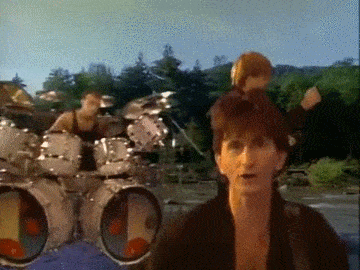
- Our favorite album is Roll the Bones and our favorite Live CD is A Show of Hands! I think Rush in Rio and Permanent Waves are the *best* though!
- They should just release the Different Stages live recording. It's pretty much out there as extra features on the other DVDs!
- The Clockwork Angels book and graphic novel are pretty average but are worth it for making Seven Cities of Gold not suck. The worst song is the best chapter of the novel
- I would buy a Blu-Ray that is just the backing videos for the live videos and I hate that the only backing vid that exists in full form is By-Tor from Rush in Rio (as an Easter Egg)
- Emotion Detector is the most underrated Rush song and I would have preferred Tom Sawyer or YYZ not get played in one of the tours to accommodate it in a concert! Only 44 songs have never been played live before and of them the only one that I think deserved to be played more is Vapor Trail because it is the ONLY title song of an album never played live (after Presto was pulled out for Time Machine)
- It is pronounced Why-Why-Zed. It is spelt Vapor Trails. The American spelling of Vapor is essential to the song's message
- Analog Kid is Alex's best song, Ghost of a Chance and Between The Wheels are second and third-- though live versions of Working Man are up there
- Geddy's solo at the end of Leave That Thing Alone (Time Machine Tour) is the exact peak of Rush, that was their highest point as a band!
- SARS Fest concert kinda sucked? Spirit of Radio with Paint It Black intro was amazing but the equipment was shot and they gave Alex a hot microphone. They also cut off the "encore" which just sucked. I am also a little salty that Rush were an opening band for the Stones *in Canada*.
- Tom Sawyer is overrated and they're not even Peart lyrics. Limelight and YYZ off of the same album are better.
- Neil's Ayn Rand period is a valid part of Rush history and provides so much extra context to The Garden. The same pen that wrote "begging hands and bleeding hearts will only cry out for more" ended his life with "the measure of a life is a measure of love and respect, the way you live and the gifts that you give, in the fullness of time it's the only return you can expect" - a man with a storied life as Neil with as much tragedy as he endured ended with him completely giving and loving in his heart when 35-40 years prior he wrote empathetically that "you don't get something for nothing"
- La Villa Strangiato is in my opinion not just the best instrumental but it is in contention for best Rush song period. I would never give it that title because it lacks Peart's lyrics and I find that people who say that have an irrational dislike of Geddy's voice... but it's still a valid take. Natural Science would get my all around best song badge. But best and favorite are not the same in my world and even still I mean *technically proficient* mixed with lyrics. I'll change my mind, likely. But that's my feeling right now.
- Geddy didn't get vocal training until before My Favorite Headache (2000) and Neil didn't get jazz drumming instruction until Burning For Buddy (1994). Both artists were just fine as they were but they perfected their arts and I prefer late era Rush because of that. The band never stopped evolving.
- I would have liked to have heard one of the solo album songs live (I Am The Spirit, Promise or My Favorite Headache) or have Bob and Doug do Take Off for a charity event like the South Park or Hawkings concerts last year. I *still* want that. Neil wasn't involved in the solo albums. It could still happen.
- I want a Jukebox Musical of Rush music so that The Body Electric isn't the only piece of fiction scored to Rush.
- Alex Lifeson could have been a comedian. He's one of the funniest humans on the planet.
- Peaceable Kingdom is better for having been the only song where lyrics were written after the music. Vapor Trail has amazing lyrics in general but I feel the limitation had positive impact and I wish Neil and the band did this practice more than once.
- Rush's improvised and last minute songs when they are running out of studio time are the best. Malignant Narcissism was the result of the album director seeing Geddy warming up with a vintage fretless bass and said "put that on the album" so they composed around the improvised riff, Force Ten was literally a last minute addition to Hold Your Fire. La Villa is said to have been recorded in a single take (I do not believe that legend as it wasn't in any of the biographies I have read). Rush just work best with limitations. They're a bunch of goofs and giving them a time limit makes them go into a Saitama style serious mode.
---
I could write tons more. But I'll call it there.
I like Rush.
A lot.
More than you think I do.
#cammie asks#rush posting#rush is a band#rush#okay it started as Cammie asks#but the Rand line was pure Camden#the first constant
19 notes
·
View notes
Text
1996.04.04 TV Times Magazine - Kang Wonrae, Koo Junyup (≈CLON) article

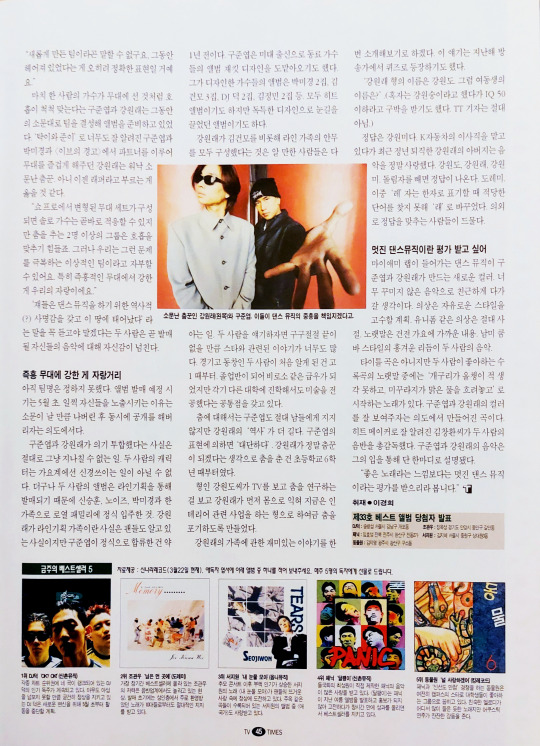
Scans credit: yours truly!
Kang Wonrae & Koo Junyup
We were born with the mission to revitalize dance music
[Tomorrow's star] Tak2Jun2's Koo Junyup and Park Mikyung's partner Kang Wonrae have come together, but their group name hasn't been decided. The two are well-known dance machines who hope to hear the words "you were born to do dance music." Coverage: Lee Gyeong-hui
"I can't say that we're a new group—it'd be more accurate to say we've been apart."
Just as the rumors said, Koo Junyeop and Kang Wonrae, who are so in sync it's like they're one singer, have formed a group and are preparing an album. Koo Junyup, all too known from Tak2Jun2, and Kang Wonrae, who brought fun to Park Mikyung's "Eve's Warning" performances as her partner, are already well-known dance machines. No, now it would be right to call them rappers.
"Solo singers can adapt easily to stages on TV shows, but it's hard for groups to coordinate. We can say we're sure we've overcome that difficulty. We're especially proud of our skill in improvised performances."
The two, whose goal is to hear that "they were born with the mission to revitalize dance music," are highly confident in their music.
Proud of their skill of improvised performances
Their group name hasn't been set yet. They plan to release their album in early May. The reason they're being revealed to the world so early is to publicize themselves after they've gotten all the fame they can get.
Koo and Kang's team-up can't be ignored. Their characters can't be something the music industry wouldn't worry about. Furthermore, with their album releasing under Line Production, they've become part of the "royal family" alongside Shin Seunghun, Noise, and Park Mikyung. Fans already know that Kang Wonrae was in Line, but Koo Junyup first came in about 1 year ago. An art school alum, Koo also designed the album covers of his peers. The covers he's designed include Park Mikyung's 2nd album, Kim Gunmo's 3rd album, DJ DOC's 2nd album, and Kim Jungmin's 2nd album. These were all hit albums, but they also drew attention for their unique designs. Kang Wonrae choreographed for all of the "Line family", including Kim Gunmo. Their chronicle of star-related stories is never ending.
The two first met in high school, both attending Gyeonggi High. Although they only became classmates in senior year, they both majored art in college.
While Koo Junyup never loses when it comes to dance, Kang Wonrae has a longer history with the art. To borrow Koo Junyup's words, he's "amazing." Kang first decided he would become a dancer in 6th grade. He picked dance up while his older brother researched through watching TV, and made his brother, who now works as an interior designer, quit dance.
Let's tell an interesting story about Kang Wonrae's family. This story also appeared on a TV quiz show last year.
"Kang Wonrae's older brother is named Kang Wondo. What is his younger sister's name?" (Someone answered "Kang Wonsoong"[1] and got suspected of having an IQ lower than 50. It definitely wasn't a TV Times reporter.)
The answer is Kang Wonmi. Kang Wonrae's father, who recently retired from his position as director of a car company, really loved music. Kang Wondo, Kang Wonrae, Kang Wonmi. The answer clears itself up if you take "Won" out from their names. Doremi. But because he couldn't find a Chinese character with the sound "re", he changed it to "rae". Surprisingly, not many get the answer right.
Want to be received as "cool dance music"
The new style that Koo and Kang profess is dance music that incorporates Miami rap. They're thinking of taking a casual approach without too many bells and whistles. As for their outfits, they're planning to go for a free style. Definitely no uniforms. The group's lyrics are close to "wholesome music,"[2] and their music has an exciting, cumbia-style rhythm.
There is a song in their album, though not the title track, that starts with "the frog can't remember when he was a tadpole, the loach muddies the clear water." It was made to show off Kang and Koo's individual colors. Kim Chang-hwan, known as a hit-maker, directed the whole album. Kang Wonrae and Koo Junyup explained their music with one sentence:
"I think rather than just being good songs, it will be received as 'cool dance music'."
–––––––––
Translator's notes (marked with small-script numbers in the text)
Wonsoong = short for "wonsoongi (원숭이)", the Korean word for "monkey".
"Wholesome music" refers to songs that had to be put on the end of Korean LPs from the 70s to 80s, which Urimalsaem describes as "songs that can be sung by anyone, regardless of age or gender." As the name implies, these songs usually have wholesome lyrics that promote "enlightening" ideals.
#1st gen kpop#1st generation kpop#old school k-pop#clon#kang wonrae#koo junyup#tv times#tv타임스#클론#강원래#구준엽
3 notes
·
View notes
Text
Doldrey — Only Death Is Eternal (Iron Lung)
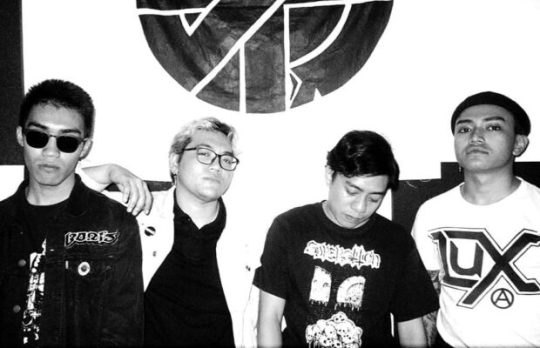
Only Death Is Eternal, the new tape from crusty death metal band Doldrey, is among the most thrilling, hugely satisfying releases from the metal underground so far this year. Unstaunched energy, massively chunky riffage, a general sensibility that’s as nasty as it is raw and exciting — all those things characterize Doldrey’s sound more or less adequately, but we’ve heard those words before, and none of them captures what’s so engaging and immediate in these songs. The sorta-stale typicality of those descriptors is complemented by the symbolics of the band’s output; all the muscled warriors and carnage in the titles and j-card art operate somewhere very remote from our everyday realities. But somehow Only Death Is Eternal is right there, fitted into the most aggro contours of the current conjuncture. It’s a terrific record.
Likely Doldrey would be wise to approach the ideological problematics of our social moment with some tentative, distant maneuvering. The band is from Singapore, and while young men are no longer subject to arrest if they wear their hair a bit long in that city-state, its dominant culture and legal-juridical apparatus still skew strongly toward the conservative. Death metal and especially crust (with that subgenre’s strong orientation toward lefty radicalism) are likely perceived as expressions of undesirable politics, and of aberrant personality.
Hence, perhaps, Doldrey’s semiotics, most of which can be traced to Kentaro Miura’s manga Berserk. (Doldrey, I am told, is the name of a fortress important in one of the long-running comic’s early narrative arcs.) That explains the swords-and-sorcery proclivities of the band’s album art and the overheated language of some of its song titles: “Blood of the Serpent,” “Torture Paradise,” “All Is Hell.” Those read like a middle-schooler’s sense of the profound, or of the profoundly brutal, if that middle schooler had been brought up on a steady diet of Conan the Barbarian, Moorcock’s Eternal Champion stories and, well, Berserk.
The nerd-factor associated with piles of mass-market paperbacks and endless trips to the comic book shop is effective cover. And maybe it’s not really (or not just) cover. Berserk’s most emphatic symbolic element is its pervasive and hyper-graphic violence, some of which has disturbing scope and awfully imagined cruelty. Doldrey’s music taps into some of that intensity, especially in the heaviness of its death metal buzz and thunder. Check out the middle section of “Moral Decay” or the last third of the title track. Still got all your teeth? Better turn it up louder. And try not to think about ongoing genocidal wars or immiserating modes of human exploitation when you do so. Good luck with that.
Beyond the implied fascination with bloodshed and the nods to Swedeath unpleasantness, it’s the crusty stuff that lifts the record into the musical midnight sun. This reviewer loves the forty or so seconds of flat-out intensity in the middle of “All Is Hell” (beginning just after the guitar solo) and the opening 90 seconds of “Societal Machine.” You can just about smell the filthy denim and feel the greasy leather, all crowding into a moldy basement space. And in that crush of bodies, you’re happy about it all: the smell, the feel, the sense of being among like-minded freaks. Allies, as it were.
None of that will dispel the nightmare that is 2024’s ongoing tilt toward fascism, a mind-boggling combo of scenes as awful as the race-rioting in the UK and as stupid as Hulk Hogan ripping open his tee shirt on the RNC podium. Berserk? Yes, but also all too real. Doldrey has our soundtrack ready.
Jonathan Shaw
#doldrey#only death is eternal#iron lung#jonathan shaw#albumreview#dusted magazine#metal#death metal#crust metal
2 notes
·
View notes
Text

The Art Practice
I got into music culture first as a performance poet. I later drifted into Sound System culture as a vocalist.
I then graduated to Hip Hop culture & became a rapper.
My rap career really took off & as the lead vocalist/rapper of Katch22, I got to produce recordings. At least 3 albums worth of writing, producing & creating a host of songs made me a more skilled song writer.
I went to film school to follow my passion for visualising & after graduating, I made many documentary films but I also led two Heavy Metal bands as lead singer, a jazz quartet as lead poet & eventually returned to Hip Hop as a solo avant-garde Rapper.
My music changed. I was less interested in drum machines & programming samples. I was enthralled by the idea of making music with musicians.
I became HKB FiNN, returned to my performance poet roots & mixed that with my highly tuned song writing skills to create a new career as a Spoken Word Artist.
After creating, producing & releasing 8 solo albums, I found myself drawn to film making & story telling in visual arts. I moved over to writing & directing fiction & I have been making movies ever since 2014.
I am still a musical poet but now I do both musical & visual poetry.
I am blessed to be an artist…🏵
Created by HKB FiNN
www.justjazzvisuals.com
2 notes
·
View notes
Text
149: Tom Verlaine // Tom Verlaine
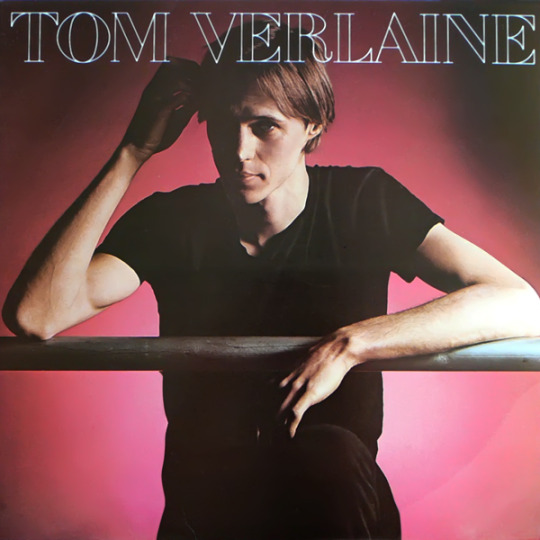
Tom Verlaine Tom Verlaine 1979, Elektra
We must consider the possibility that Tom Verlaine was a himbo. The kind of lanky, blue-eyed bone machine with lockpicker’s hands who makes a plain short-sleeved shirt look like runway apparel, and has the sort of innate social reserve that makes you blushingly work to fill in his silences—though the truth might be that most of the time there is nothing really going on behind his Mona Lisa smirk, only the faint urge to go back to fiddling with his guitar by himself. You can map anything onto a quiet man like that when he is beautiful, and when he plays his instrument like (to quote Verlaine’s one-time paramour Patti Smith) “a thousand bluebirds screaming.”
youtube
Much has been made of his nicking the stage name ‘Verlaine’ from the French poet, but by his own admission he just thought it sounded good! I mean, skim this 2000s-era interview about books from Dusted magazine; he clearly likes and is curious about art, and he’s admirably uninterested in impressing anyone (as established though, he wouldn’t need to!), but he doesn’t seem to think about any of it in a particularly analytical way. I mention all this because, due to its urbane effeteness, Verlaine’s output is always read as intellectual music, when there’s an equal possibility he was actually more of a sweet, slightly spectrumy goofball with intuitive cool. That’s not to privilege intellectualism over intuition; many of our greatest painters, composers, and even poets are hopeless at explaining the compulsions that shape their output, and a lot of the ones who can do the ‘splainy part well would be better off as critics.
At any rate, the trigger that set off this line of himbo inquiry/conspiracy theory was the duo of “Mr. Bingo” and “Yonki Time,” the songs that close the first side of Verlaine’s self-titled solo debut. They are simply put, two of the dumbest ass songs I have ever heard in my life. How to describe “Yonki Time?” A tuneless soundcheck goof replete with raspberries and fart noises that someone decided was funny enough to work into a full song, it’s the kind of musical non-sequitur that makes you wonder whether sequitur is Latin for “funny.” Lyrically, it’s full of jokes that probably made his friends shrug and say with an air of apology, “Well, Tom has a unique sense of humour.” The fact it wasn’t relegated to a B-side, its existence at all, really, forces a slight reappraisal of how much irony there was to songs like “Venus di Milo” and “Prove It”; how do they hit us if they were more goofily sincere than they seemed? To me, it lends them a certain charm, makes the otherwise inscrutably aloof Verlaine a little more human.
Tom Verlaine has taken me a while to get into compared to the first two Television records that preceded it. It’s not wildly different; Verlaine wasn’t anyone’s idea of a musical chameleon. He discovered his style as a vocalist, guitarist, and arranger almost immediately, and never meaningfully deviated from the trebly, drifting update on the Velvets established on Marquee Moon. Some of this is surely due to the absence of Television’s co-lead guitarist Richard Lloyd, whose comparatively rugged attack gave that band a more rocking vigour. Without him, Verlaine’s sound is dreamier, and it requires more attention to appreciate the brilliance of how he’s playing these diffuse pseudo-pop songs. Some songs, like the regal “Last Night,” clear out space for Verlaine to do his meditative guitar wizard thing, but often it’s the more propulsive songs like the jangly “Red Leaves” or the groovy “Souvenir from a Dream” that produce the real moments of wonder, when on a sixth or seventh listen you realize no one else on earth would’ve thought to put a song together in just this way.
youtube
There’s a story that David Bowie brought him into the studio during the Scary Monsters sessions to record some guitar parts, and Verlaine spent the entire allotted time trying out the many available amps without being able to settle on one and ended up leaving without having recorded anything usable. The Bowie connection was a huge opportunity for Verlaine, who had just recently begun his solo career. Television had been critically revered but had had little commercial impact, and Tom Verlaine wasn’t a brisk seller either—Bowie’s choice to cover the album’s “Kingdom Come” was a coup, but Verlaine was unwilling or unable to capitalize on the moment. His next LP, 1981’s Dreamtime wasn’t any more or less commercial than the albums that preceded it: it was another Tom Verlaine qua Tom Verlaine album, and if he couldn’t make any other kind of record, nobody else could make exactly his kind either. He was after all a uniquely beautiful man.
149/365
#tom verlaine#television#david bowie#'70s music#new wave#guitar god#himbo#vinyl record#music review#ad hominem
2 notes
·
View notes
Text
The Sonic Alchemy of Steely Dan's 'Aja': A Masterpiece in Production
Introduction: The Making of a Jazz-Rock Odyssey
In the pantheon of meticulously crafted albums, Steely Dan's Aja stands as a pinnacle of sonic perfection, and the title track is a testament to the band's dedication to detail and innovation. Released in 1977, Aja came at a time when the music industry was in the throes of transformation, with punk rock challenging the status quo and disco reigning supreme on the dance floors. Yet, amidst this upheaval, Steely Dan's Walter Becker and Donald Fagen carved out a niche of their own, blending jazz sophistication with rock sensibility.
The recording process of "Aja" was as intricate as the music itself. Becker and Fagen, known for their perfectionism, enlisted a who's who of session musicians, including drummer Steve Gadd, saxophonist Wayne Shorter, and guitarist Denny Dias, to bring their vision to life. Engineered by the legendary Roger Nichols at The Village Recorder and Producer's Workshop in Los Angeles, the sessions were a blend of precision and creativity. An anecdote often recounted is the story of Gadd's masterful drum solo, recorded in a single take, which became one of the song's defining moments.
Sonic and Technical Aspects: Crafting the Sound
The recording of "Aja" was nothing short of groundbreaking. Steely Dan's use of the state-of-the-art 24-track tape machines allowed for a layering of sound that was unprecedented at the time. The studio environment was meticulously controlled, with an emphasis on achieving the cleanest sound possible. Nichols employed a custom-built console and a collection of outboard gear that included UREI 1176 compressors and EMT 140 plate reverbs, adding depth and dimension to the track.
One of the unique techniques used during the sessions was the precise placement of microphones to capture the intricate details of each instrument, particularly Shorter's saxophone and Gadd's drums. The band also made extensive use of overdubbing, a painstaking process that involved layering multiple takes to achieve the desired sound. This approach, combined with Fagen's exacting standards for vocal performance, resulted in a track that was both lush and pristine.
The Song's Impact: A Legacy of Excellence
The recording techniques employed on "Aja" have since become a benchmark for audio fidelity and creativity in production. The album's influence is evident in the work of countless artists and producers who admire its seamless integration of jazz and rock elements. Steely Dan's commitment to sonic excellence set a new standard in studio practices, inspiring a generation of audiophiles and musicians to prioritize quality and innovation in their recordings.
What to Listen For
Steve Gadd's Drum Solo: Listen for the fluidity and precision of Gadd's drumming, a hallmark of the track's dynamic range.
Wayne Shorter's Saxophone: Notice the clarity and warmth of Shorter's solo, achieved through careful mic placement and room acoustics.
Layered Harmonies: Pay attention to the intricate vocal harmonies, a result of meticulous overdubbing and mixing.
Reverb and Space: Experience the subtle use of reverb that adds depth without overwhelming the natural sound of the instruments.
Instrumental Interplay: Observe the seamless interaction between the rhythm section and the lead instruments, creating a cohesive and engaging soundscape.
0 notes
Text
The Great Kindergarten Play (and the Incident with the Fog Machine, ft. Loki) (Todd From Asgard)

The kindergarten spring play was a big deal.
It had songs. It had choreography. It had exactly one rented ladybug costume and no understudies.
Delaney had spent three weeks directing twenty-three 5-year-olds who couldn’t stand still long enough to blink.
Todd, ever the supportive boyfriend, had shown up to every rehearsal with juice boxes, a folding chair, and the kind of reverent energy one might bring to a royal coronation.
He also cried every time the kids sang “You Are My Sunshine.”
“I am not ashamed,” he said, wiping his eyes. “Tiny warriors. Big emotions.”
The night of the performance, the multipurpose room was packed.
Parents filled the folding chairs. Someone’s baby was already crying.
The backdrop was a wrinkled bedsheet spray-painted with clouds.
Todd sat in the front row in a “Carver Arts Supporter” T-shirt.
And then... Loki showed up. Disguised as the lighting tech guy.
Delaney spotted him immediately, mostly because no one else in the building wore a velvet blazer and eyeliner to adjust a floodlight. She stormed over.
“NO.”
Loki turned slowly, grinning. “Delaney, dearest, so nice to meet you at last and how positively mortal of you to scowl in public.”
Todd appeared behind her. “Brother. Leave.”
“I’m helping with ambiance,” Loki said cheerfully. “The children deserve drama.”
“You're banned from this dimension’s community centers,” Todd snapped.
Loki pulled a remote out of his pocket. “And yet—look what I brought.”
He pressed a button.
FWOOOOOOSH.
A fog machine roared to life.
The kindergarteners screamed in delight.
Delaney’s mouth dropped open. “You brought theatrical smoke to a kindergarten musical?!”
“It’s biodegradable,” Loki said. “I’m not a monster.”
The play began with minimal disaster.
Devon forgot half his lines and said “cow” instead of “cloud,” which got a laugh.
Lily tripped over a flower prop and dramatically whispered, “Tell my story.”
But then—right before the final song—Loki struck.
The fog machine roared again. Lights dimmed. And the music abruptly changed... to an ominous cello solo.
Out of the haze, Loki appeared on stage in full Asgardian robes, holding a tiny golden tambourine.
“Ladies and gentlemen,” he declared. “I bring you... the real ending.”
Todd leapt out of his chair. “LOKI, NO.”
Loki raised a hand. “You always say that, and yet I’m still delightful.”
The kids paused. One brave boy clapped. Loki winked. Delaney stormed the stage. Todd followed.
Two teachers held back the fog machine with a broom and prayer.
Delaney hissed, “You’re ruining snack time!”
“I’m enhancing it,” Loki whispered. “Wait until the glitter cannon.”
“WHAT—”
Todd tackled him mid-monologue.
The tambourine flew. A juice box exploded. Loki vanished in a puff of dramatic indignation. The audience applauded.
Mostly because they thought it was part of the show. Afterward, Delaney collapsed backstage.
Todd offered her a cookie and said solemnly, “I’m sorry. I should’ve sensed him earlier. His mischief levels were… off the charts.”
Delaney groaned. “Your family is a nightmare.”
Todd grinned. “But at least you’re never bored?”
She sighed. “True.”
A pause.
“Wait. Glitter cannon?”
Todd nodded. “It’s still in the ceiling. I disarmed it.”
“Good.”
“…Mostly disarmed.”
She gave him a look.
“Mostly.”
#the avengers#avengers#thor#loki#marvel thor#marvel#marvel cinematic universe#marvel mcu#loki marvel#loki odinson
1 note
·
View note
Text
Jimetta Rose Interview: Optimism is Audacious
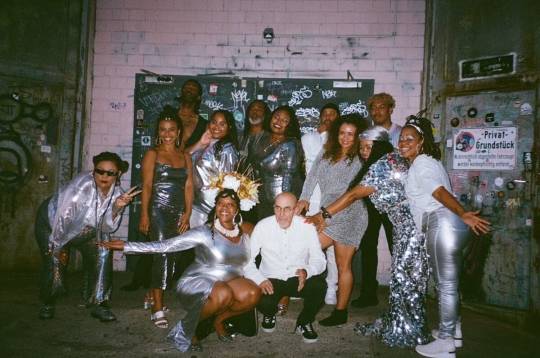
Jimetta Rose & The Voices of Creation
BY JORDAN MAINZER
Jimetta Rose's journey to this point of straight up valorous hope was shaped by hardship, but also hard work, faith, and musical influence. The vocalist and songwriter grew up singing in church, eventually becoming a youth choir director. Though she then gigged during the evening after working a day job, and released a couple solo albums, Rose missed singing in groups. She reached out on social media for folks to sing with--it didn't matter whether they were professional or amateur as long as they, like Rose, viewed music as a powerful healing force. Along with organist Jack Maeby (who she met through gig bandmate, multi-instrumentalist Dexter Story), The Voices of Creation was formed.
Three years ago, Rose and The Voices of Creation released their debut album How Good It Is, a record that put you right in the church pews. It was a testament to positivity and gratefulness, that this group was able to make music together. Their second album, released last summer on Night Dreamer, in contrast, looks forward, with unflinching poise and passion. Its title, Things Are Getting Better, challenges you to find a source of light in a country and world where, objectively, many things are getting worse for a whole lot of people. Notably, Rose chose this title in spite of losing her mother and brother in a short period of time (The Voices of Creation sang at their funerals), and as a tribute to learning how to overcome.
To soundtrack their songs of conviction, Rose and The Voices of Creation turned to forms of Black music beyond gospel, like doo wop, hip-hop, and house. Many of the songs channel multiple genres at once. The group repeats the mantra "stepping into portals chasin' sunshine" over a groovy hand drum shuffle, sprinkled piano, and a propulsive shiny synth bass. Producer and percussionist Allakoi Peete delivers a rap verse mid-way through. "Everyday Blessings" starts with a slow organ and subtly folds in thumbing bass, eventually giving way to Yohance Wright's four-on-the-floor drum machine beat. “Everywhere I Look (Love Is Everywhere)” juxtaposes record scratches and syncopated backing vocals with spoken word and radio effects, as if you're experiencing multiple sermons at once from different universes.
After Rose and The Voices of Creation finished a long tour last year, she spoke with me over Zoom, calling from a coffee shop in her home of Los Angeles. We talked about the differences between recording and playing live, the different vocalists on Things Are Getting Better, a capella songs, and more. Of course, months later, wildfires would devastate her city, their ramifications continuing to do so for the foreseeable future, throwing another wrench into the viewpoint that things are getting better. Rose and The Voices of Creation nevertheless continue to sing. Last Sunday, they participated in a Sunday brunch concert at 2220 Arts + Archives and will perform there again this Sunday, with food trucks starting at noon and music at 1 P.M. Tickets are still available at time of publication, so go check them out if you're in L.A. Below, read my conversation with Rose, edited for length and clarity.
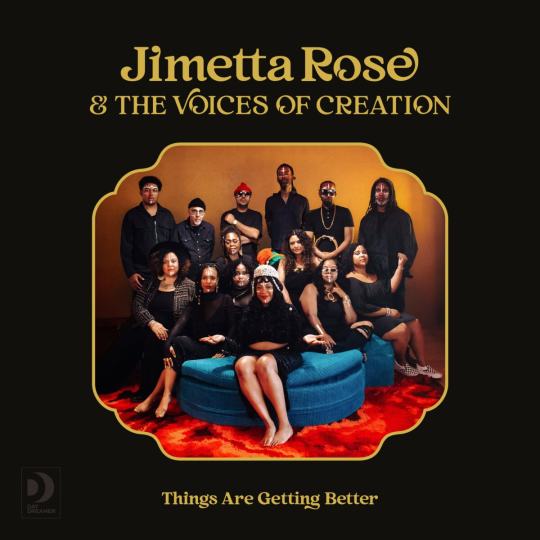
Things Are Getting Better album art
Since I Left You: Things Are Getting Better is about trying to embody radical optimism in the face of personal and collective grief. You tackle this feeling head-on, with the first line on "Portals": "stepping into portals chasin' sunshine." What about the song makes it so powerful as the first single and opener?
Jimetta Rose: It's a great reminder that every day you have the opportunity to shape your mind and get ready for that day. When I write these songs, they're very much true. Every morning that I wake up, I do express gratitude. It keeps me aware that there are portals of possibility always around. [I'm] looking for them and...prepared for them and finding lessons in the challenges that I face. [I'm] trying to convey and share that perspective with people, in hopes that it will help others be more optimistic. Like you said, optimism is quite audacious. Let's do it together: What can our minds create when fueled by that kind of inspiration?
SILY: There are a lot of moments throughout the album that are written or planned but feel spontaneous. How do you capture that spontaneous feel?
JR: Keeping the live feeling in the music is something that happens from rehearsing together every week. Whether we feel good or bad, we sing songs together, so by the end of rehearsal, we feel better. [We keep] the energy we created together and [grow] in our ability to convey that to the audience. It's great to hear that it's palpable, that you can hear the energy behind it and not just the planning. We craft these songs, but we also craft that energy. We just got back from touring, which is a blessing but also fatiguing, trying, challenging. Because we practice that energy, it helped us overcome the fatigue to perform every night at 100%. We took care of ourselves as a family, on the off days as well. It's a collective sacrifice and commitment to what we're doing. It actually does bring us joy.
SILY: Speaking of sacrifice, you thank the families of The Voices of Creation members in the liner notes for Things Are Getting Better.
JR: As we started out, we had no idea where this was going. In the summer, when kids are out of school, there are a lot of different sacrifices being made. I don't want to overlook any part of what makes this possible, because I'm so grateful it's happening. I know that there have to be so many different energies supporting this.
SILY: At what point in writing do you decide who will take lead vocals?
JR: Certain songs were written for [specific] people. Shoutout to my sister Khalila Gardner Adelabu. "Everyday Blessings" was written for Khalila. When I [would] teach to the choir, I [would] sing to make sure the harmonies were on point. I had to jump between second soprano and alto to reinforce what people were learning in the song. I had Khalila sing lead when I was teaching, so when it started to be time to go on tour, I needed to write a song for Khalila that she could take as her song.
Shoutout to my brother Kam Talbert, who sings lead on "Surrender the Day". I wrote that song so long ago. [I wanted] to hear another voice on it, [and] I wanted it to be male, so it went through a few iterations within the choir. Ultimately, Kam was the person that rehearsed and prepared at the time of recording. He did an amazing job of bringing that song to life. It's awesome to not sing every song and hear how other people might interpret the melody and words I've written.
Shoutout to my sister Roz Kumari, who sang alongside Khalila on "Things Are Getting Better". They were both original members [of The Voices of Creation]. [The title track] was actually one of the songs written and arranged early before I had a choir. It could have been on the first album. It wasn't then what it is now. I was workshopping the idea, and me and the musicians were going through different interpretations of it. Roz and Khalila both have beautiful voices. I've been singing with Khalila since high school, and I was friends with Roz through the community but didn't know she sang. When I found out she had such a great voice, I thought, "Okay, 'Things Are Getting Better and Better', I'm teaching you a lot of songs, but learn the verses [to this one]. This verse is not mine." They were the people that stood out at the beginning, so those verses went to them.
My sister Tamara Blue has a history in spoken word and poetry and is an amazing performer. You hear her on "To Each A Zone" as well as "Portals" with the spoken word parts. It's just about highlighting everyone and showing that all of our energy is necessary.
SILY: As much as the instrumentation stands out on Things Are Getting Better, "Miracle" and "VoC Chant" are a capella, comparatively minimal, more subtle moments, but they showcase the power of voice. They're also the shortest songs on the album. You look at the track length on paper and think they might be transition songs, but they're so much more than that. Can you tell me about how they came to be?
JR: "Miracle" is gonna be a full song at some point. I'm gonna go an Afro House direction. When we were in the studio, I had the idea of an interlude and prelude, [to suggest that there's] more work to come, more evolutions are gonna happen, but ultimately...[I was] looking for a miracle. Maybe the miracle was that the album would come out, maybe it's that we were singing together. We were at that space, paying for the recording [studio], with a budget, not having traditional jobs, so the song came from a real place. I thought it sounded great, but it didn't have music yet. I demoed it on my phone [and ultimately decided to leave the arrangement as is]. This is what this album is about: Things are getting better, but we're still looking for this miracle.
"VoC Chant" I made up as a transition on stage for tour last year. I wanted us to be able to walk around, like when everybody walked on at the beginning of the The Cosby Show. It also was a way of saying what we stand for. I put that on the record to let people feel and hear the choir and let them know we're healing ourselves through music.
SILY: I liked the radio moments at the end of "To Each A Zone" and on "Everywhere I Look (Love Is Everywhere)". What's the story behind those?
JR: I'm goofy. [laughs] I am a clown. We actually planned to have [group member] Novena Carmel record a radio drop, because she's a DJ on KCRW. We ran out of recording time in our schedule, so we weren't able to get her to record. When we were mixing, Jack and Allakoi were on the phone, and I was joking about the radio drop, [imitating] what it could have sounded like. They decided to set up a mic. I recorded it and sent it to Allakoi and Jack. They were cracking up. With "Everywhere I Look", I was imagining radio waves being interrupted, like one song is playing, and there's this other vibe coming through the radio that takes over. That one was kind of planned.
All those moments add to the freedom we're trying to convey. We're trying to be intentional with what we're creating but have fun when we're doing it.
SILY: I love when things start out as a joke but become an integral part of the song.
JR: We have some really strong personalities. Everybody is a star in their own way. If we can figure out a way to shine together, it's awesome.
SILY: You obviously put in a lot of work before recording. Does it take a whole other level of effort to play the songs in front of an audience?
JR: It's different. The album is more about precision and counts. One thing I did on this last record was prepare the choir to sing all the songs without any lead vocals, so I could record them later at a more affordable studio at a later rate. But for the live show, we have choreography and almost theatrical moments. We rehearse every Saturday. When tour is coming, we rehearse with dance mirrors so everybody can see themselves and get the moves more sharp so it becomes second nature on stage. Instead of getting lost in the space, we've already practiced. It's two different focuses.
SILY: Are you always writing for The Voices of Creation, or do you have to set aside time to make music?
JR: This music and this group has definitely [taken up my time] for the past 5 years. I still write other music. The way I write is very organic. I was thinking of an idea the other day when the choir was freestyling in the background, so I [know I] have to at some point focus on arranging the song into something I can repeat, because they were improvising pretty much everything behind me. That's as much as I set it aside, to focus on making a whimsical, musical thought into a concrete thing. That's what happened with "Everyday Blessings": The hook was there before the verse.
SILY: Like with "VoC Chant", the finished product can start from almost anywhere.
JR: Almost anywhere. You never know how your ears are formed by something. When the choir started singing, I thought it sounded like a doo-wop song. Looking to the kind of music I listen to--a lot of 1950's and 60's doo-wop, because I like the voices and the harmonies--all of that informed that little moment. But really, I was just trying to move the choir around on stage. We were playing "Let the Sun Shine In" at clubs every night. [It's] a great song, but is that the opener every time? "VoC Chant" happened and became a transition to get on stage, move around and get ready for another song.
I think it's beautiful to have people you can trust and be vulnerable around. That's the rapport I have with Jack and Allakoi. With everybody, I try to make the environment feel the same, to explore our talent and our gifts so we can discover more. I definitely try to keep that energy in the group. Going forward, you'll probably hear even more from the choir as far as songs we're collaboratively writing together, workshopping songs into our sound because we're very particular about the message and energy we convey. Otherwise, my job is to figure out how I can help that expand and get out into the world but carrying the vibration of the VoC. It's gonna be a heck of a journey.
SILY: You've mentioned Sun Ra as an influence and spoken about the idea of "Black spiritual classical music" when contextualizing Things Are Getting Better. Other touchpoints include Funkadelic and Pharoah Sanders. But it's much more subconscious than that. It seems like it's a lineage, but a language, and each person has their own lineage and language they're bringing to rehearsal and recording and performing.
JR: Definitely. If people remember that as much as you are what you eat, you are what you listen to, too. I listen to all kinds of music and can hear the relativity between them. Death metal vibrations, I don't understand, but I understand they are vibrations that people need. It's anxiety-inducing for me, but [for some,] it's their comfortable vibrations.
I'm learning how to speak the language of the people who came before me. I think of myself as a music listener and appreciator more than a maker. I'm able to put the dots together--I didn't know that Sun Ra had this doo wop history, but it made sense to me. It's because he came from that background, and I could hear it. I'm grateful to be able to contribute sounds to this musical legacy.
youtube
#interviews#live picks#jimetta rose#jack maeby#khalila gardner adelabu#kam talbert#night dreamer#2220 arts + archives#things are getting better#jimetta rose & the voices of creation#the voices of creation#dexter story#how good it is#allakoi peete#yohance wright#roz kumari#tamara blue#novena carmel#kcrw#sun ra#funkadelic#pharoah sanders
1 note
·
View note
Text
The Evolution of Diss Tracks in Hip-Hop History
Diss tracks have long been a staple of hip-hop culture, turning personal and professional rivalries into lyrical masterpieces. From subtle jabs to full-fledged verbal warfare, these songs have defined careers, shaped public perception, and even changed the course of music history. Diss tracks are more than just insults over a beat—they’re expressions of dominance, artistic skill, and raw emotion. The most iconic diss tracks remain etched in hip-hop history, influencing future generations of rappers and fans alike.
The Origins of Diss Tracks
The roots of diss tracks can be traced back to the early days of hip-hop when MCs engaged in rap battles to assert their lyrical prowess. These battles were initially friendly competitions at block parties and underground scenes, but as hip-hop grew in popularity, so did the intensity of these rivalries.
One of the earliest recorded diss tracks was "The Bridge Is Over" by Boogie Down Productions, released in 1987. The song was part of the infamous Bridge Wars between BDP and the Juice Crew, setting the stage for future diss tracks that would escalate tensions in the industry. Hip-hop, by nature, has always been competitive, and as the genre evolved, so did the sophistication and intensity of its lyrical feuds.
By the late 1980s and early 1990s, the diss track had become an art form. Rappers began using their music as a platform to settle disputes, respond to critics, and even expose industry politics. The emergence of gangsta rap further fueled this culture, making diss tracks an essential element of hip-hop’s storytelling tradition.
Iconic Diss Tracks That Shaped the Industry
Diss tracks have played a crucial role in some of hip-hop’s most legendary feuds. Whether it was East Coast vs. West Coast, label disputes, or personal vendettas, these tracks have cemented themselves in rap history. One of the most notorious diss tracks of all time is Tupac Shakur’s "Hit ‘Em Up." Released in 1996, the song took direct aim at The Notorious B.I.G. and Bad Boy Records, intensifying the already heated rivalry between the two coasts.
Similarly, Nas’s "Ether" is considered one of the most devastating responses in hip-hop history. After Jay-Z took shots at Nas in "Takeover," Nas fired back with "Ether," delivering scathing bars that reshaped the perception of their feud. The track was so impactful that "ether" became a slang term for completely destroying an opponent in a battle.
Another classic diss track is "No Vaseline" by Ice Cube. Following his departure from N.W.A., Cube unleashed an unfiltered takedown of his former group, particularly targeting Eazy-E and manager Jerry Heller. The track showcased Cube’s sharp lyricism and solidified his place as a formidable solo artist.
For a deeper dive into the most legendary diss songs, check out the list of best diss tracks of all time. This collection highlights the most iconic lyrical feuds in rap history and their lasting impact on the genre.
The Modern Era of Diss Tracks
With the rise of social media and streaming platforms, diss tracks have taken on a new dimension. Today, artists can drop a diss track and instantly reach millions of fans, making feuds more public than ever before. The digital age has made diss tracks even more effective, as fans can dissect lyrics, create memes, and fuel online debates about who had the better bars.
One of the most memorable recent feuds was between Drake and Pusha T. What started as a series of subliminal disses escalated when Pusha T released "The Story of Adidon," exposing Drake’s hidden son and questioning his credibility. The diss track sent shockwaves through the industry, proving that even in the modern era, diss tracks can have serious consequences.
Similarly, Eminem and Machine Gun Kelly’s feud resulted in back-to-back diss tracks, with Eminem’s "Killshot" breaking records on YouTube. These battles highlight how diss tracks remain a key part of hip-hop’s competitive nature, keeping the genre engaging and unpredictable.
The Influence of Diss Tracks on Hip-Hop Culture
Diss tracks do more than just entertain; they push artists to sharpen their skills and elevate their lyricism. The best diss tracks are filled with clever wordplay, double entendres, and intricate rhyme schemes, showcasing the technical side of rap. Some of the greatest MCs in history have built their reputations on their ability to deliver hard-hitting diss tracks that leave lasting impressions.
Beyond rap battles, diss tracks have also played a role in shaping hip-hop narratives. Feuds like 50 Cent vs. Ja Rule, Meek Mill vs. Drake, and Nicki Minaj vs. Remy Ma have all contributed to hip-hop’s evolving story, proving that competition is at the heart of the genre.
Moreover, diss tracks often transcend the music industry, sparking discussions in mainstream media, influencing pop culture, and even affecting an artist’s commercial success. A well-executed diss track can boost an artist’s career, while a weak response can damage their reputation.
Why Diss Tracks Will Always Be Relevant
As long as hip-hop exists, diss tracks will remain a crucial part of the culture. The competitive spirit of rap, combined with the ever-changing landscape of the industry, ensures that there will always be rivalries to address and lyrical battles to fight. Diss tracks not only showcase an artist’s talent but also remind listeners of the raw, unfiltered nature of hip-hop.
From the old-school beefs of the '80s and '90s to the viral feuds of today, diss tracks continue to shape the genre in significant ways. Whether it’s an underground MC battling for respect or a mainstream artist addressing industry politics, diss tracks will always hold a special place in hip-hop history.
Related Articles:
For further reading, explore these related articles:
The Best Diss Tracks Ever: Songs That Changed Music Forever
A Journey Through the Best Album Art of All Time
The Best Album Covers Ever: Why They Matter and Stories Behind Them
The Hottest Female Rappers Who Are Changing the Game
For additional resources on music marketing and distribution, visit DMT Records Private Limited.
1 note
·
View note
Text
Carla Bley: The Top 25 icons in Jazz history
Carla Bley: The Top 25 pearls in Jazz historyCarla Bley: a life in MusicSubscribe & download the best scores and sheet music transcriptions from our Library.Carla Bley Big Band - Festival de Jazz de Paris 1988Track ListPersonnelBrowse in the Library:
Carla Bley: The Top 25 pearls in Jazz history
One of the finest and most productive of all female jazz instrumentalists, bandleaders and composers is Carla Bley. From her sprawling jazz opera Escalator Over The Hill to her arrangements for Charlie Haden’s Liberation Music Orchestra, and from her Big Carla Bley Band to her trio with saxophonist Andy Sheppard and bassist Steve Swallow, she has made her mark on all sizes of composition and ensemble. This ten-piece band toured in the 1980s and catches her iconoclastic reworking of gospel and big band jazz.
Carla Bley: a life in Music
Carla Bley (born Lovella May Borg, May 11, 1936) is an American jazz composer, pianist, organist and bandleader. An important figure in the free jazz movement of the 1960s, she is perhaps best known for her jazz opera Escalator over the Hill (released as a triple LP set), as well as a book of compositions that have been performed by many other artists, including Gary Burton, Jimmy Giuffre, George Russell, Art Farmer, John Scofield and her ex-husband Paul Bley. Every jazz fan knows the name of Carla Bley, but her relentless productivity and constant reinvention can make it difficult to grasp her contribution to music. I began listening to her in high school when I was enamored with the pianist Paul Bley, whose seminal nineteen-sixties LPs were filled with Carla Bley compositions. (The two were married.) My small home-town library also had a copy of “The Carla Bley Band: European Tour 1977,” a superb disk of rowdy horn soloists carousing through instantly memorable Bley compositions and arrangements. Some pieces change you forever. The deadly serious yet hilarious “Spangled Banner Minor and Other Patriotic Songs,” from that 1977 recording, celebrates and defaces several nationalistic themes, beginning with the American national anthem recast as Beethoven’s “Appassionata” Sonata. From the first notes onward, I was never quite the same again. The novelist and musician Wesley Stace has a similar story: “Aged sixteen, and full only of rock and pop music, I came upon Carla Bley by chance through a Pink Floyd solo project, Nick Mason’s ‘Fictitious Sports,’ which I only bought because the vocals were by my favorite singer, Robert Wyatt, once of Soft Machine. It’s a Carla Bley album in all but name: her songs embellished with brilliant and witty arrangements. I wanted to hear more. ‘Social Studies’ (also from 1981) thus became the first jazz album I ever bought, opening up a whole world I knew nothing about. ‘Utviklingssang’ is perfect, all gorgeous melody and abstraction, no words required. She’s everything I want from instrumental music.”
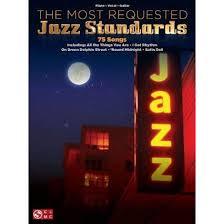
In the last half decade, many of Bley’s remaining peers from the early years have died: Paul Bley, Charlie Haden, Roswell Rudd, Ornette Coleman, Paul Motian. At eighty-two, Bley is still composing and practicing the piano every day. But it also felt like it was high time to rent a car, visit a hero, and try to get a few stories on the official record. Bley and her partner, the celebrated bassist Steve Swallow (and another living link to the revolutionary years of jazz) live in an upstate compound tucked away near Willow, New York. When I drove up, Bley and Swallow were just coming back from their daily walk through the woodland. Their lawn boasts an old oak tree and a massive chain-link dinosaur made by Steve Heller at Fabulous Furniture, in nearby Boiceville. The home offers enough room for two powerful artists and their personal libraries, not to mention striking paintings by Dorothée Mariano and Bill Beckman. Bley’s upstairs study is stocked with hundreds of her scores and an upright piano, on which she played me her latest opus, a sour ballad a bit in the Monk tradition, with just enough unusual crinkling in the corners to prevent it from being too square. When we sat down to talk, Bley proved to be witty and surreal, just like her music. (Swallow is the house barista and fact checker.) Bley’s early development as an independent spirit is well documented in the excellent 2011 book “Carla Bley,” by Amy C. Beal. I began a little further along, and asked her about Count Basie in the late nineteen-fifties. “Count Basie was playing at Birdland, Basin Street, and the Jazz Gallery when I was working as a cigarette girl,” she said. “I got to hear him more than anyone else, and it was an education.” Basie is still her favorite pianist: “He’s the final arbiter of how to play two notes. The distance and volume between two notes is always perfect.” At the end of the decade, her husband, an associate of Charles Mingus, Ornette Coleman, and Sonny Rollins, wanted to play more as a trio pianist but lacked material. One day Paul Bley came to Carla and said, “I need six tunes by tomorrow night.” There’s an obvious thread of European classical music in early Bley compositions, and this fit perfectly with the sixties jazz avant-garde. Ornette Coleman’s “Lonely Woman” is closer to a Mahler dirge than to Duke Ellington; Charles Mingus gave a deconstructed blues composition the European-style catalogue number “Folk Forms No. 1.” Many of Bley’s own pieces from that era have atonal gestures and abstract titles like “Ictus” and “Syndrome.” Among the many musicians listening carefully was Keith Jarrett, who told me that Paul Bley was, “Sort of like Ahmad with certain kinds of drugs.” Ahmad Jamal’s biggest hit was the D-major dance “Poinciana,” a bland old standard given immortality by Jamal’s rich jazz harmony and the drummer Vernel Fournier’s fresh take on a New Orleans second-line beat. Paul Bley’s recordings of Carla’s famous melody “Ida Lupino” have a G-major dance with a new kind of surreal perspective. When comparing “Poinciana” and “Ida Lupino” back to back, Jarrett’s comment—“certain kinds of drugs”—makes sense. However, while Ahmad Jamal had to use plenty of imagination when rescoring “Poinciana,” Paul Bley just needed to get the paper from his wife and read it down: Bley’s piano score of “Ida Lupino,” with inner voices and canonic echoes, is complete. Like many jazzers, I first heard of the film-noir icon Ida Lupino thanks to Bley’s indelible theme. I finally got to ask her about the title. “I just saw a few movies she did, and I thought she was sort of stripped and basic,” Bley said. “She didn’t have all the sex appeal that a female star should have. She was sort of serious. Maybe I felt a bond with her for that reason. I wanted to be serious. It wasn’t anything to do with her being the first female director. I learned that later.” Another significant early Bley work is “Jesus Maria,” first recorded by Jimmy Giuffre with Paul Bley and Steve Swallow for Verve, in 1961. Among the listeners inspired by this trio was Manfred Eicher, who reissued these recordings for ECM, in 1990. The reissue leads off with the rather classical “Jesus Maria,” where the pretty notes seem to suspend in the air, suggesting the famous “ECM sound” several years before the label was founded. I asked Eicher about Bley’s early compositions and he said, “There are so many of them, each as well crafted as pieces by Satie or Mompou—or Thelonious Monk for that matter. Carla belongs in that tradition of radical originality.” Bley was a radical, but she also sought structure. She told me about the early-sixties avant-garde: “In free playing, everybody played as loud as they could and as fast as they could and as high as they could. I liked them, but there was also what Max Gordon said about a bunch of guys screaming their heads off: ‘Call the pound.’ I think the music needed a setting. Just as it was, I thought free jazz needed work.” A key turned in the lock when Bley heard the roiling, church-inspired experimental tenor saxophonist Albert Ayler, who she says was, “Maudlin! Maudlin in the most wonderful way. He gave me license to play something that was really corny and love it.” Another watershed was “Sgt. Pepper’s Lonely Hearts Club Band” by the Beatles, a suite of songs that form a bigger picture. “An artist friend of mine came over one day with this album,” Bley told me. “He said, ‘Jazz is dead. All the artists are listening to this. We don’t listen to jazz anymore. This is it.’ ”
Subscribe & download the best scores and sheet music transcriptions from our Library.
Carla Bley Big Band - Festival de Jazz de Paris 1988
https://www.youtube.com/watch?v=AQUHXCEflK0 Track List 00:00:09 - Song of the eternal waiting of canute 00:10:24 - The girl who cried champagne - I 00:18:05 - The girl who cried champagne - II 00:21:50 - The girl who cried champagne - III 00:29:29 - Real life hits 00:40:53 - Fleur carnivore 00:52:48 - Lo ultimo 01:00:51 - end credits Personnel Carla Bley - piano Christof Lauer - saxophone-soprano Wolfgang Puschnig - saxophone-alto Andy Sheppard - saxophone-tenor Roberto Ottini - saxophone-baryton Lew Soloff - trompette Jens Winter - trompette Gary Valente - trombone Frank Lacy - cor Bob Stewart - tuba Daniel Beaussier - oboe, flute Karen Mantler - orgue Steve Swallow - bass Buddy Williams - batterie Don Alias - percussions Read the full article
0 notes
Video
youtube
That Guy (Miguel's Song) - fundraising link below!
Miguel Hernandez is the founder and solo art machine behind Astoria Music Collective. Miguel has fallen ill and the community is coming together to help him and his family come through. Like the song says, Miguel loves everybody, genuinely, and is just the coolest, sweetest person, aside from all of the support and hard work he does on behalf of artists. We all love Miguel, and we all have a story about something wonderful he did for us. Give at this link if you can, or attend one of the live fundraising shows all month. Follow Astoria Music Collective for the details on amazing music, community, and support. We all love that guy.
#youtube#that guy#that guy (miguel's song)#miguel's song#do you know that guy#the repressions#repressions#astoria music collective
1 note
·
View note